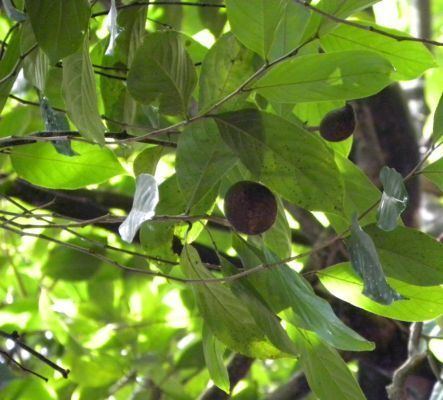Rank Species | Genus Hydnocarpus Higher classification Hydnocarpus | |
 | ||
Similar Hydnocarpus, Flacourtiaceae, Hydnocarpus kurzii, Achariaceae, Gynocardia odorata | ||
Hydnocarpus wightianus (or more commonly Hydnocarpus wightiana) or Chaulmoogra is a tree in the Achariaceae family. Hydnocarpus wightiana seed oil has been widely used in Indian medicine and Chinese traditional medicine for the treatment of leprosy. It entered early Western medicine in the nineteenth century before the era of sulfonamides and other antibiotics for the treatment of several skin diseases and leprosy. The oil was prescribed for leprosy as a mixture suspended in gum or as an emulsion.
Contents
Common names
Common name: Jangli Almond
Botanical name
Hydnocarpus pentandrus (Buch.-Ham.) Oken Hydnocarpus pentandrus Family: Flacourtiaceae (Coffee Plum family) Synonyms: Chilmoria pentandra, Hydnocarpus laurifolia
Habitat
In India: It grows in tropical forests along western Ghats, along the coast from Maharashtra to Kerala, Assam, Tripura, often planted on road sides in hilly areas.
Other countries: The tree is found in South East Asia, chiefly in Indo Malayan region. cultivated in Sri Lanka, Nigeria and Uganda.
Morphology
This is a tree up to 10 m (33 ft) tall. The tree is deciduous and as well as evergreen too. Bark is brownish, fissured; blaze pinkish. Branch lets are round, minutely velvet-hairy. Leaves are simple, alternate, carried on 0.7–2.2 cm (0.28–0.87 in) long stalks. Leaves are 8 cm–23 cm × 3.5 cm–10 cm (3.1 in–9.1 in × 1.4 in–3.9 in), usually oblong to elliptic-oblong, tip long-pointed, often falling off, base narrow, margin toothed, papery, hairless. Midrib is raised above, secondary nerves 5−7 pairs. Flower s are borne in short cymes or solitary, in leaf axils. Petals are white. Berry is woody, round, 6–10 cm (2.4–3.9 in) across usually brown tomentose, black when young; seeds numerous The flowering takes place from to January to April. Flowers are greenish white in color and grow solitary or recemes.
Trees of the species that yield Chaulmoogra oil grow to a height of 12–15 m (39–49 ft) and in India trees bear fruits in August and September. The fruits are ovoid some 10 cm (3.9 in) in diameter with a thick woody rind. Internally they contain 10-16 black seeds embedded in the fruit pulp. The seeds account for some 20% of the fruit weight. A typical tree produces 20 kg (44 lb) of seed/annum. The kernels make up 60−70% of the seed weight and contain 63% of pale yellow oil (mukherjee).
Chemistry
The oil is unusual in not being made up of straight chain fatty acids but acids with a cyclic group at the end of the chain. Seeds are ovoid, irregular and angular, 1 to 1 1/4 inches long, 1 inch wide, skin smooth, grey, brittle; kernel oily and dark brown. A fatty oil is obtained by expression, known officially as Gynocardia oil in Britain, as Oleum Chaulmoograe in the U.S.A.
Leprosy
Leprosy has for some time been known to be a bacterial disease, with the result that Chaulmoogra oil is no longer used in its treatment. Multidrug therapy (MDT), employing a number of antibacterial drugs, remains highly effective, and people are no longer infectious after the first monthly dose. It is safe and easy to use under field conditions due to its presentation in calendar blister packs. Relapse rates remain low, and no resistance to the combined drugs is seen.
